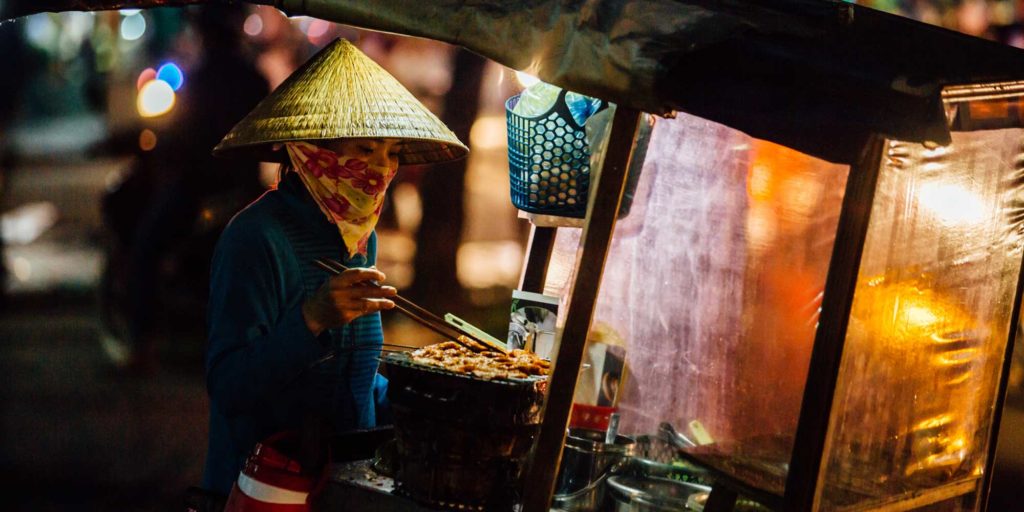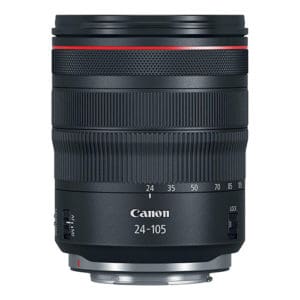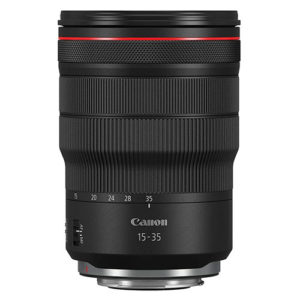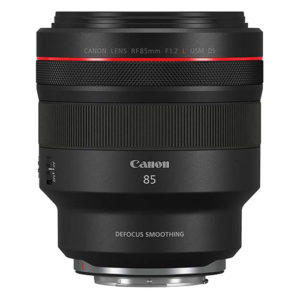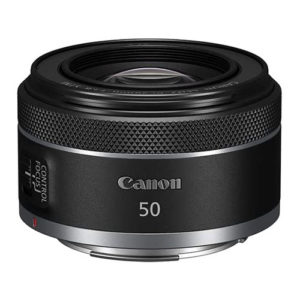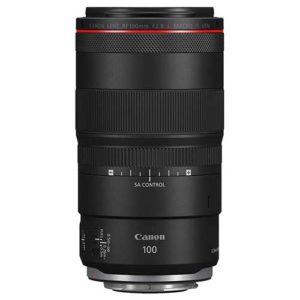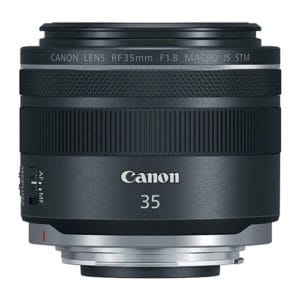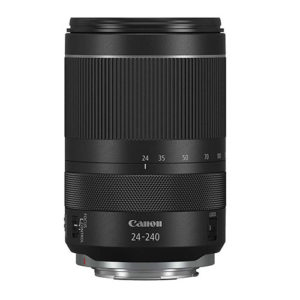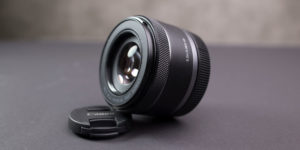Most Canon RF mount lenses perform well in low-light conditions, which is crucial in street photography given that you have no control over the lighting.
They also offer superior autofocus speed when compared to older EF lenses.
Throw in the built-in control ring that lets you change settings quickly, and it’s easy to understand why RF is the way to go when you’re chasing the perfect candid shot on the street.
While those features answer the question of why you should choose a Canon RF lens, it also leads us to another question.
Which Canon RF lenses are the best for street photography?
That’s the question we’ll be answering today. The 8 best Canon RF lenses that you should check out before taking to the streets are:
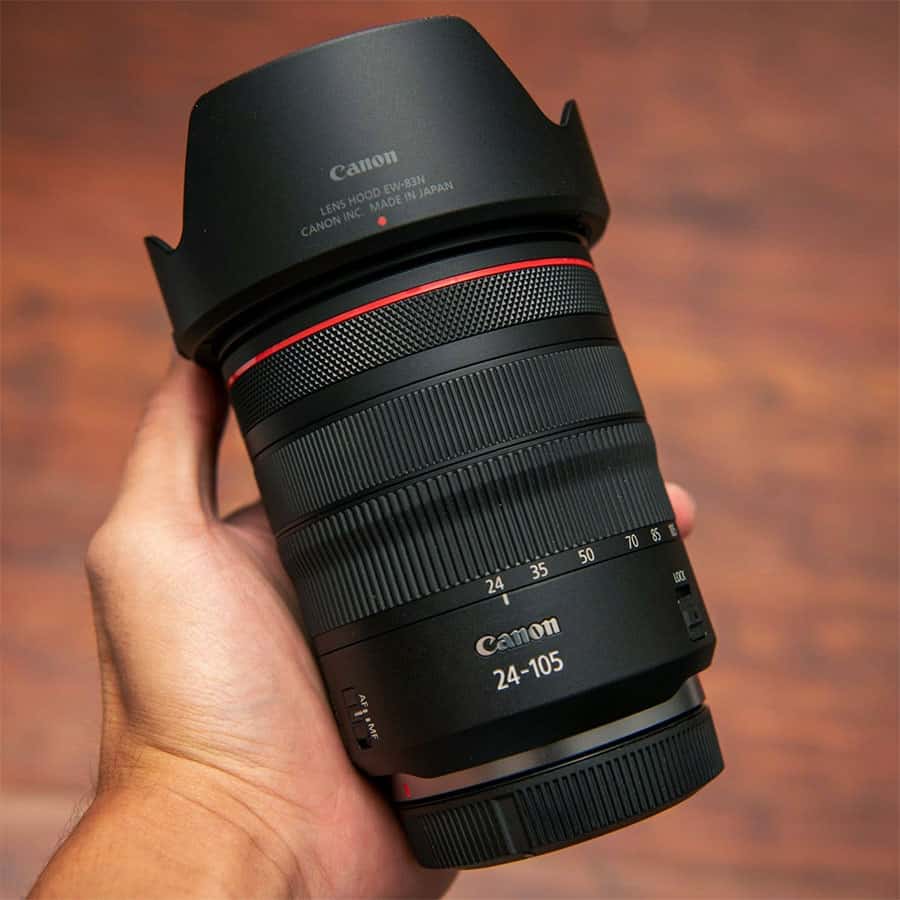
With its versatile zoom range and constant F/4 aperture, this lens is the perfect addition to your street photography kit.
The zoom range gives you the option to shoot up close and personal, or from a distance for that candid feel.
This lets you adapt to the constantly changing conditions while you’re out shooting in public.
The constant F/4 aperture provides great depth of field, allowing the camera to compensate for movement within the shot.
It also prevents changes in exposure when zooming in and out, so you don’t have to waste precious time adjusting between shots.
This can make the difference between capturing or missing a stunning moment, given that your subject may not know you’re shooting.
Besides the zoom and aperture, this lens also boasts an exceptionally fast autofocus system that lets you capture stills in an instant.
Speed is important in street photography because sometimes you only have an instant to get your shot.
There’s one main con for this lens, its size. It measures 6.26 inches when fully extended and weighs about 25 ounces.
Many users report that it feels a bit heavy when on the camera body, which is definitely something to take into account when you’re shooting on the street.
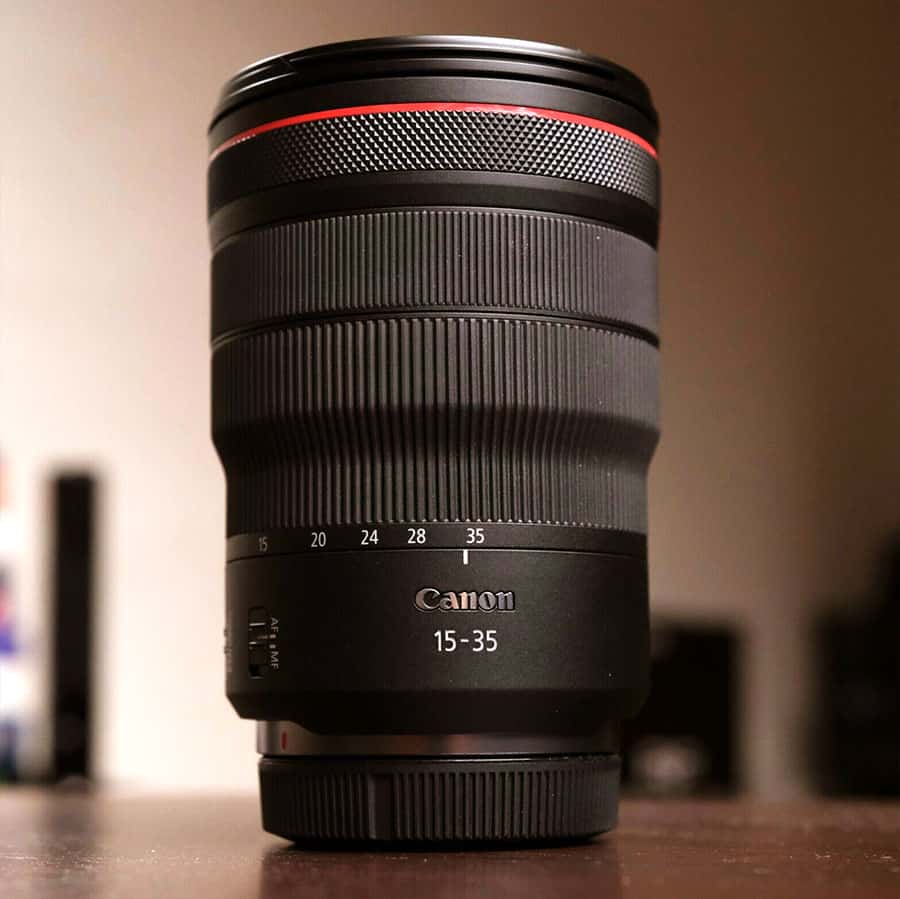
This ultra-wide-angle lens is a staple for serious photographers. It features an image stabilization ability that’s rare in this kind of wide-angle zoom lens.
Those features make this a prime choice for street photographers, who in the past had to carry an f/4 lens if they wanted a wide lens with stabilization.
The 15-35mm’s image quality is crisp and clear, as is to be expected with the RF series lenses.
Part of that quality comes from the Nano USM Auto Focus system, which is fast, holds up to constant use, and is silent.
That silence is particularly golden for those who couldn’t stand the constant noise the older EF Canon lenses tended to produce.
While this canon lens tends to be praised more for its landscape capabilities than its portraits, it’s a great versatile option for when you’re looking to capture your subject and their background in perfect detail.
This also makes it a favorite for shooting large crowds, perfect for the ambitious street photographer.
When it comes to cons, photographers do have a few complaints you should be aware of.
The first is that there’s no gap between the zoom and focus rings, so you could find yourself turning the wrong one. Not a huge problem, but you might want to spend some time getting used to it before you head out to shoot.
The second common complaint is that you may experience some unintentional vignetting when you set the lens to 15mm. Finally, a slight wide-angle distortion has also been reported, but it’s easy to fix on lightroom.
Overall, most photographers consider this an excellent candidate when choosing lenses to add to your street photography kit.
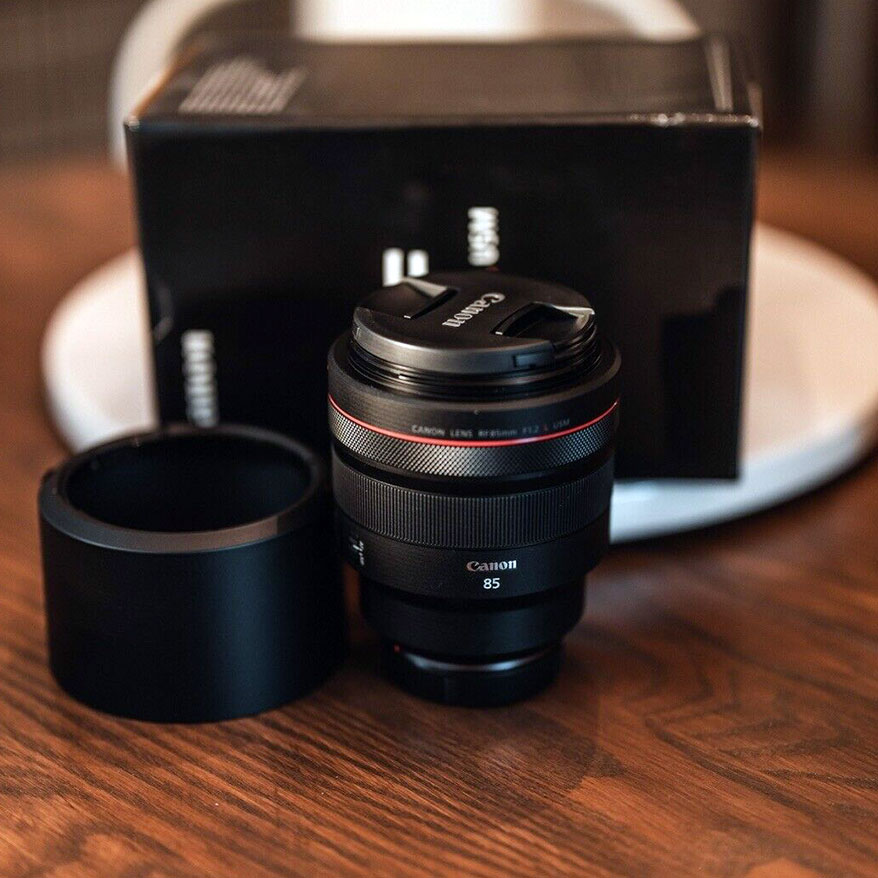
This compact lens with an impressive maximum aperture offers super-sharp quality and stabilized macro magnification, making it a great choice for shooting close-ups of people.
Street photographers take a lot of portraits, and when it comes to portraits, this lens is one of the best.
In fact, it’s known to beat out lenses that cost thousands of dollars more than it does.
This is mainly due to its exceptional sharpness and its uncanny ability to separate subjects.
With this lens, it’s easy to get the flawlessly blurred background that’s a favorite among photographers and clients, without having to spend too much time on setting changes.
As we’ve noted in previous sections, speed is everything with street photography, so a lens that can create this kind of photographic atmosphere quickly is a game-changer.
This lens is also known for its extremely fast and accurate autofocus, and ability to capture moving subjects, even in low-light, a definite plus for today’s street photographers.
The 85mm comes with no short supply of praise, it’s a favorite rf lens for portraits and in the product world.
Despite this, there is one complaint that crops up often in reviews. This lens doesn’t have a 1:1 reproduction ratio.
That means the image isn’t the same size on the sensor as it is in real life.
That could potentially cause you to lose some detailing in your photos, depending on what you’re shooting.
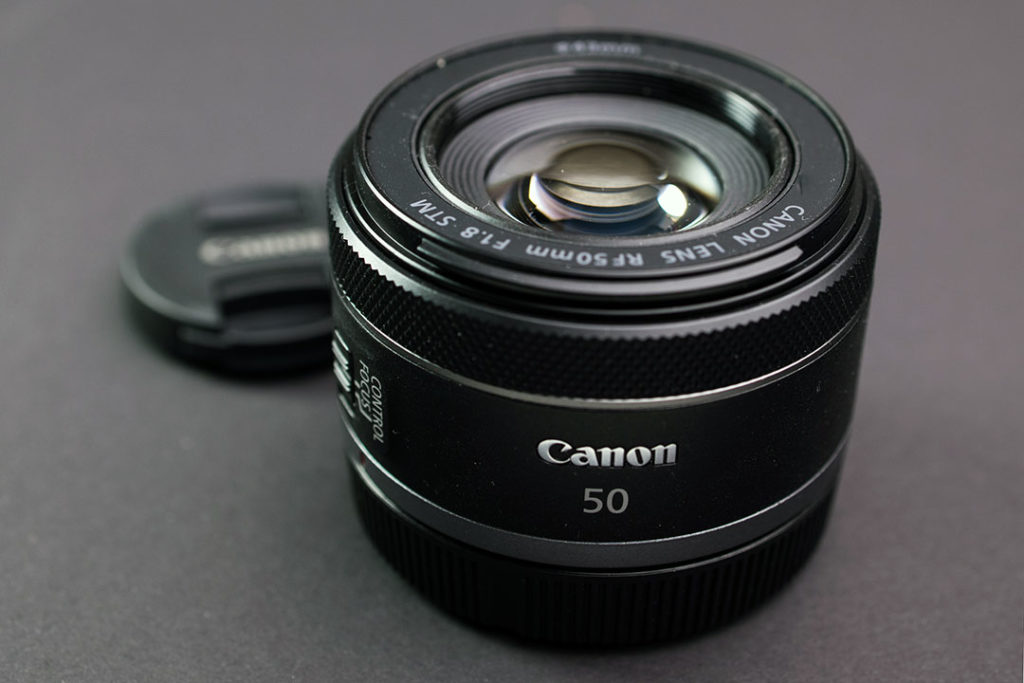
50mm lenses are a go-to for photographers whose primary subjects are people.
They offer the image quality of a much more expensive lens without breaking the bank.
They also allow you to use them from a comfortable distance.
You can easily fill your frame with your subject without the awkwardness of being right on top of them.
This is the best lens for all around photography on the streets, a 50mm is a staple for most photographers, a great lens to bring everywhere in your street photographer’s bag.
The compact design packs a punch with its versatile field of view, depth of field control, and ability to handle tricky lighting situations.
You’ll get excellent image quality for a low price (compared to most rf mount lenses).
This lightweight lens has only one aspherical element which reduces spherical aberrations and distortion.
This canon lens also comes with a Super Spectra coating that minimizes flares to improve contrast and color accuracy.
The two cons for this one are that you can lose some image sharpness when working with f/1.8 and it has been known to show longitudinal chromatic aberration (LoCA) in some conditions.
LoCA is a type of color error that causes red, green, and blue areas in the frame to focus at different distances.
Overall, the lens is great for everyday use and a must-have for anyone heading out onto the street.
Outstanding image quality, high-quality image stabilization, and excellent autofocus are recurring themes in the Canon RF lenses, so suffice it to say this lens is no exception.
The 100mm is considered an excellent lens for portraiture, one of the main focuses of street photography.
The reason this lens comes so highly recommended is its ability to go from a close-cropped shot to a group photo without needing a second lens.
A feature that’s fairly unique to this lens is its spherical aberration control ring.
The ring lets you move an element in the lens to change the spherical aberration properties of the lens.
A positive shift will concentrate light rays peripherally in the circle of confusion (CoC), softening the foreground to the desired blur.
A negative shift will soften both the foreground and background into a blur but could lead to a loss of sharpness around the focus plane.
This feature can be quite useful for street photography, as it allows you to bring your subject into sharp focus with ease.
This also lends itself well to blurring out annoying or distracting background details, as well as just creating a more artistic shot.
With this lens, you can achieve results that most people would need to create during post-production.
Some users report that the lens has a focus shift issue, where it loses clarity under certain conditions.
The reports of this are hit and miss, but it’s worth considering before making a purchase.
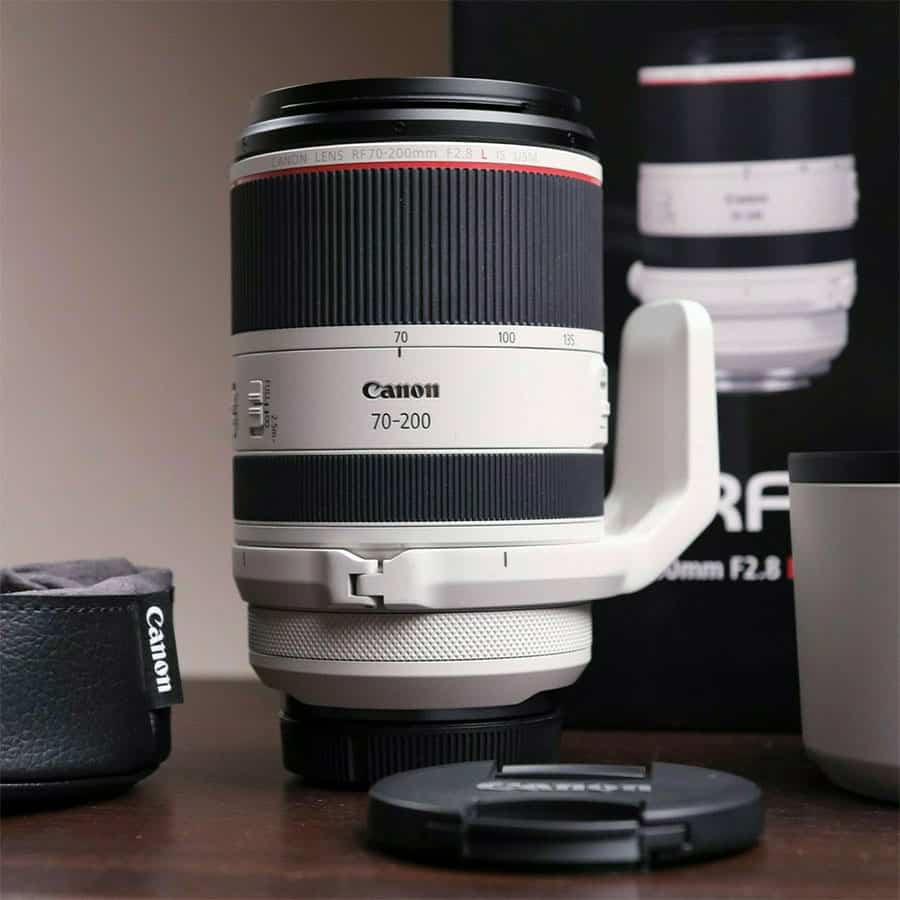
A 70-200mm lens is a staple for professional photographers.
The first thing to know about this lens in comparison to other 70-200mm models is that it’s much lighter.
This makes it much easier to fit into a gear bag and carry around for hours at a time.
That of course makes it much easier on the backs of street photographers everywhere.
Besides the weight, the lens features 5-stop image stabilization, allowing it to be used effectively in handheld situations.
It also boasts a smooth design with rings and switches that are easy to use, and it has an excellent focal length range.
That range lends itself well to shooting people as you can go from a headshot to a full body shot with no loss of quality.
It pushes the focus distances far enough away to avoid any distortion.
This lens also offers the ability to diffusely blur the backgrounds of photos to create next-level portraits, super-fast autofocus, and three switchable modes for applying stabilization (great rf lens for video work as well).
This is the perfect street photography lens to shoot candid portraits and detais from a distance, and one of the best canon lenses period in my opinion.
The stabilization is particularly important given that this is a long lens, and many street photographers find themselves in places where they can’t use tripods.
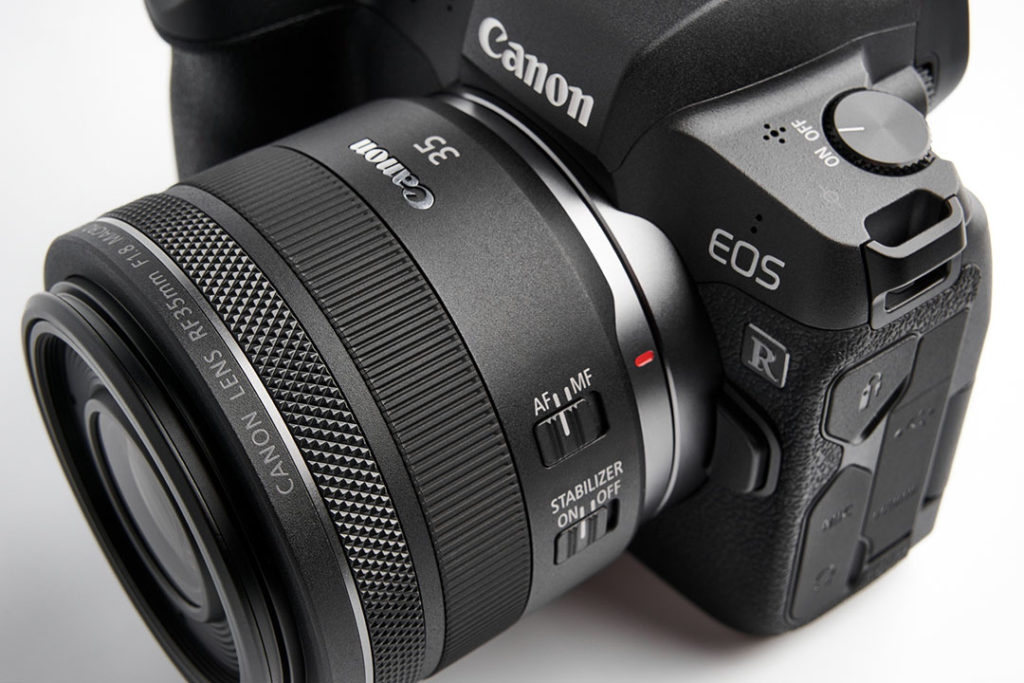
A 35mm lens is considered a perfect fit for street photography, as it gives you a natural-looking perspective of the subject’s surroundings.
The lens provides a 0.17m minimum focus distance that allows 0.5x macro shooting, with a 5-stop stabilizer that corrects for the x-y shift and angular vibrations.
The lens is lightweight and small, making it easy to carry or store. It also comes with Canon’s full suite of aberration eliminating options to handle lateral chromatic aberration, distortion, vignetting, and diffraction.
Plus, the Digital Lens Optimizer aims to offset the softening effects from diffraction.
The rear element sits near the back of the lens which results in high corner-to-corner sharpness, even when you have the lens wide open.
This means you don’t have to sacrifice quality when trying to achieve a shallow depth of field.
A trick that’s especially handy when you need to blur out a less-than-ideal background.
The cons of the RF 35mm are that it lacks zooming convenience and photographers report that the autofocus can be slow to adjust itself and lock on to a subject.
This could be an issue if you’re shooting in fast-paced circumstances, depending on how reliant you are on the autofocus feature.
Despite these flaws, the lens is a great cost-effective option for those seeking a reliable prime lens for street photography, and the occasional macro photography shot.
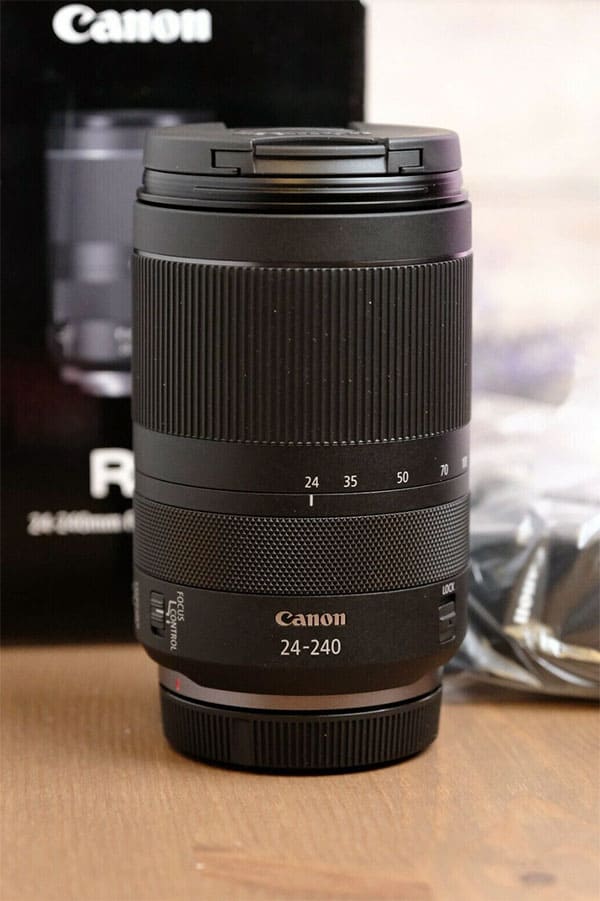
This small and lightweight versatile lens offers a full-frame superzoom that’s perfect for everything from wide-angle coverage to telephoto shots.
The sharpness this lens offers is rare in a zoom lens and it comes with built-in aberration and distortion correction.
The lens also sports the standard RF attractions of next-level autofocus and 5-stop stabilization.
Overall, what makes this an excellent lens for on-the-go street photographers is its range of coverage.
When you need to keep your gear bag light or don’t know exactly what conditions you’ll be facing, a lens this versatile is key.
Users report that this lens, like many zoom lenses, does come with the trade-off of losing some image quality the further you zoom in.
While that indicates it’s a good idea to move in closer when you can, this lens will cover those occasions when you simply can’t get close to your subject.
Choosing The Right RF Lens For Your Needs
We’ve discussed the eight best RF mount lenses for street photography, but how do you know what kind of lens is the right choice for you?
Let’s go over a few questions and answers that can serve as a guide as you make your decision.
Consider What You're Planning To Use The Lens For
Different lenses are good for different things. Do you want to do close-up shots? Headshots? Full body? A subject with the entire background in focus?
You need to consider these questions and answer them before you choose a lens.
The last lens we talked about, the RF 35mm, is great for shooting a subject with a shallow depth of field but wouldn’t be appropriate if you candid shots from afar.
For that, you might choose the 70-200mm or the 24-240mm. Once you know what it is you need, it’s easier to make an informed decision.
If you are not afraid of manual focus, you can get incredible value for the money going with an adapter and vintage, third party lenses.
Choosing The Right Focal Length For Street Photography

As a general rule, a lens with a longer focal length like a 200mm, 100mm, or 70mm is better for shooting distant features, textures, or when creating dramatic backgrounds.
A lens with a shorter focal length like a 35mm, 24mm, or 16mm is better when you want the whole scene in focus.
So, if you’re looking to shoot a subject on the street with the more of the background in the same image as the person, or wider scenes, the best lenses for you are shorter.
On the flip side, if you’re shooting your subject candidly, from further away and need to focus on them alone, you need a longer lens.
If you’re undecided, you can go with something like the 24mm-240mm so you get a wide range of options rolled into one.
Aperture considerations
The aperture controls the amount of light that passes through a lens and to the sensor.
The lower your aperture the more light gets in and the shallower your depth of field becomes.
A high aperture lets in less light and has a deeper depth of field.
High apertures, like the F/2.8 available on the RF 100mm, are great for portraits, night photography, and isolating a subject.
Low apertures like the F/9 or F/16 are better suited to things like landscape photography because they tend to lose details of the photo.
With that in mind, you should strongly consider a high aperture when choosing a camera for street photography.
Prime or Zoom?
A prime lens has a fixed focal length that doesn’t zoom in or out, and a zoom lens is its opposite.
Prime lenses are known for fast apertures, sharp details, and smooth bokeh effect.
They maximize light and excel at separating foreground from background. Prime lenses are popular with street photographers that favor a more compact lens and a better value for the money.
You need a really high end zoom to compete with most lower end prime lenses.
Zoom lenses let you shoot from farther back, reframe shots easily, and are known for creating flattering photos of people.
When you’re working in a changing environment, a zoom lens can take the place of multiple prime lenses.
At the end of the day, both lenses have their merits. Prime lenses often produce sharper images of higher quality, but zoom lenses offer you more flexibility in a single lens.
It comes down to what your needs are, how many lenses you’re willing to buy, and whether or not you feel like carrying around multiple lenses.
Some photographers consider RF lenses in the 100mm range to be a decent middle ground, but it’s a widely debated subject.
Conclusion
It can be hard to choose favorites when there are so many good options, but these eight are definitely standouts.
There’s something for everyone on the list, so take your time looking them over if you’re considering picking up new gear.
Now that we’ve gone over our picks for the best Canon RF lenses for street photography, we’d like to hear your thoughts.
What lenses do you love? Will you be adding any of these to your collection in the future? Leave a comment down below and let us know what you think.

